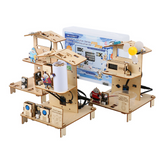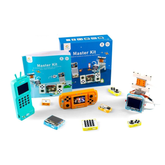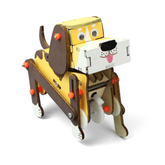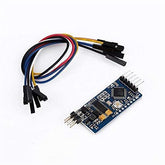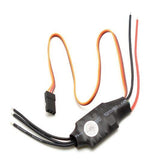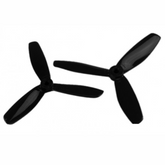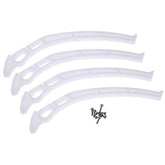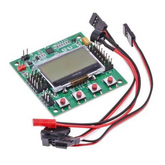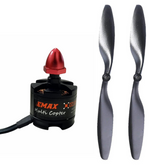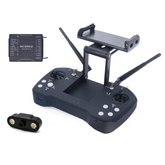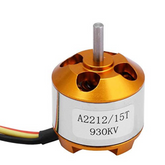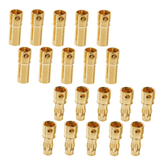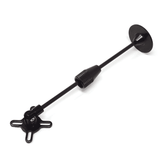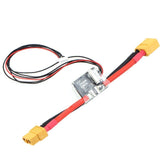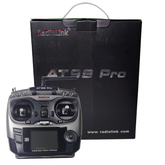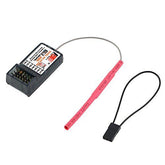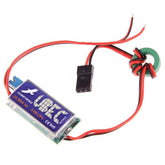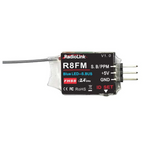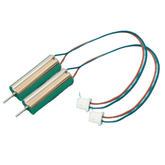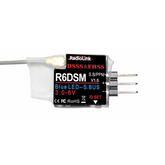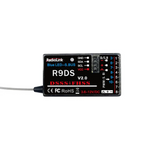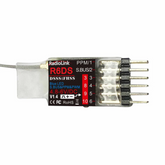-
Mini OSD Module For 2.6 APM PIX Pixhawk Flight Control BoardMini OSD Module For 2.6 APM PIX Pixhawk Flight Control Board APM has an companion OSD board called MinimOSD. It reads all the MAVLink data in the APM telemetry stream and overlays it on the video stream if you’re using an on-board camera and...
- Rs. 1,049
Rs. 1,399- Rs. 1,049
- Unit price
- per
Save Rs. 350 -
SimonK ESC 12ASimonK ESC 12A This is the Simonk 12A is a great ESC product DIY Drone enthusiasts and quadcopters. This 12A Brushless ESC motor supports 1-3S Small Axis. This Simonk ESC 12A ESC motor is optimized to achieve the perfect driving effect With low voltage protection, and over-temperature protection. ...
- Rs. 550
Rs. 799- Rs. 550
- Unit price
- per
Save Rs. 249 -
5045 3 Blades Drone Propeller CW & CCW - 1 pair5045 3 Blades Drone Propeller CW & CCW - 1 pair The 5045 3 Blades Drone Propeller CW & CCW is a highly durable and flexible set of propellers designed for small multi-rotor drones. Known for their exceptional balancing and precise hub centering, these...
- Rs. 62
Rs. 99- Rs. 62
- Unit price
- per
Save Rs. 37 -
High Landing Gear Kit for Quadcopter DroneHigh Landing Gear Kit for Quadcopter Drone The High landing gear kit is a great quadcopter accessory that is compatible with F450 F550 SK480 quadcopter drones. Using the landing gear for a DIY quadcopter kit adds extra protection to your DIY quadcopters during landing...
- Rs. 166
Rs. 199- Rs. 166
- Unit price
- per
Save Rs. 33 -
KK board 2.1.5 Multi-Rotor LCD Flight Control BoardKK board 2.1.5 Multi-Rotor LCD Flight Control Board The KK 2.1.5 Flight controller board is a highly efficient flight controller for drones that is designed to manage the flight of various multi-rotor aircraft, such as Tricopters, Quadcopters or drones, and Hexacopters. Its primary function...
- Rs. 4,045
Rs. 5,499- Rs. 4,045
- Unit price
- per
Save Rs. 1,454 -
Emax MT2213 920kva Brushless Motor with 1045 Propeller (1 pair)Emax 2213 920kva Brushless Motor with 1045 Propeller (1 pair) The Emax 920kva brushless drone motor comes with an adapter that is specially made to adjust the rotation of propellers in the CCW (counter-clockwise) direction. Multi-Rotor Brushless Motor MT2213-920kva is excellent and designed for Multirotor fast...
- Rs. 1,332
Rs. 1,607- Rs. 1,332
- Unit price
- per
Save Rs. 275 -
SKYDROID T12 2.4GHZ 12CH REMOTE CONTROL WITH CAMERASkydroid T12 2.4GHz 12Ch Remote Control with Camera Skydroid was a company that specialized in drone technology, covering areas such as research and development, production, and marketing. It possessed the independent capacity to innovate and develop digital control transmission links, flight control, airframe, pan/tilt,...
- Rs. 28,541
Rs. 34,499- Rs. 28,541
- Unit price
- per
Save Rs. 5,958 -
930 KV BLDC Motor930 KV BLDC Motor The A2212 930kV Brushless Motor is the ultimate choice for quadcopter enthusiasts seeking high-performance and reliability. Specifically designed for quadcopters and multi-rotors, this 930kV motor delivers exceptional power and efficiency. Crafted with precision, the motor boasts a versatile compatibility, making...
- Rs. 489
Rs. 599- Rs. 489
- Unit price
- per
Save Rs. 110 -
3.5mm Male Female Banana Plug Bullet Connector (Pack of 10)3.5mm Male Female Banana Plug Bullet Connector These 3.5mm gold connectors are very compact which makes them ideal for many applications, especially good for multi-rotors, this type of connector is also very good for where you are constantly plugging in and unplugging. These gold...
- Rs. 217
Rs. 256- Rs. 217
- Unit price
- per
Save Rs. 39 -
Apm2.6 MWC GPS Compass Antenna Folding Fixed Mount Bracket HolderApm2.6 MWC GPS Compass Antenna Folding Fixed Mount Bracket Holder The Apm2.6 MWC GPS Compass Antenna Folding Fixed Mount Bracket Holder offers a professional and practical solution for mounting a folding GPS antenna. Crafted with durability in mind, this holder utilizes aluminium turning and...
- Rs. 229
Rs. 399- Rs. 229
- Unit price
- per
Save Rs. 170 -
Micro Coreless Motor with propeller(7x20) - 4 PiecesMicro Coreless Motor with propeller - 4 Pieces These are Micro Coreless Motor with propellers, This micro coreless motor is exactly what you need if you want to build your own small-scale Quadcopters, Drones, helicopters, and RC planes. It is very small in size and in...
- Rs. 478
Rs. 510- Rs. 478
- Unit price
- per
Save Rs. 32 -
5.3V 3A APM Power Module with XT60 Connector5.3V 3A APM Power Module with XT60 Connector The APM 2.5/6 Pixhawk Power Module for drones is a simple way of providing your APM 2.5/6 with clean power from a LiPo battery as well as current consumption and battery voltage measurements, all through a...
- Rs. 529
Rs. 884- Rs. 529
- Unit price
- per
Save Rs. 355 -
Radiolink AT9S Pro 12CH 2.4GHz Transmitter and Receiver for Drone with R9DSRadiolink AT9S Pro 12CH 2.4GHz Transmitter and Receiver for Drone with R9DS The Radiolink AT9S Pro Remote is a high-performance transmitter and receiver for drone, designed for RC enthusiasts seeking precision, reliability, and full control. With 12 channels and paired with the R9DS Receiver...
- Rs. 10,299
Rs. 12,499- Rs. 10,299
- Unit price
- per
Save Rs. 2,200 -
FlySky FS-R6B 2.4GHz 6Ch ReceiverFlySky FS-R6B 2.4GHz 6Ch Receiver The FlySky FS-R6B 2.4GHz 6Ch Receiver is a spare receiver module for the popular Flysky CT-6B Radio Receiver. It comes with a bind plug to bind the receiver to your transmitter. Flysky is one of the popular brands that only manufactures a...
- Rs. 999
Rs. 1,849- Rs. 999
- Unit price
- per
Save Rs. 850 -
5V-6V 3A Switch-mode UBEC5V/6V 3A Switch-mode UBEC This is 5V/6V 3A Switch-Mode Ultimate BEC – Voltage Regulator. The module is designed with an advanced switch-mode DC-DC regulator IC which eliminates the fear of overheating. It offers a powerful output with 5V and 3A. The output is powerful even working...
- Rs. 334
Rs. 419- Rs. 334
- Unit price
- per
Save Rs. 85 -
Radiolink R8FM 2.4GHz 8-Channel RC Receiver SBUS/PPM for Mini FPV Racing DronesRadiolink R8FM 2.4GHz 8-Channel RC Receiver SBUS/PPM for Mini FPV Racing Drones The Radiolink R8FM micro-RC receiver is a high-performance micro receiver designed for mini FPV racing drones, quadcopters, and aircraft. Equipped with a frequency hopping spread spectrum (FHSS) pseudo-random algorithm, it delivers excellent...
- Rs. 1,298
Rs. 1,999- Rs. 1,298
- Unit price
- per
Save Rs. 701 -
3.7v 716 Magnetic Micro Coreless CCW Motor for Drone Quadcopter3.7v 716 Magnetic Micro Coreless CCW Motor for Drone Quadcopter The 716 Magnetic Micro Coreless Motor for RC Drone Quadcopters is a very compact and lightweight DC motor nicely crafted for perfectly matching with your small 100mm like multirotor frames. The 7x16mm CCW lightweight brushed DC...
- Rs. 289
Rs. 493- Rs. 289
- Unit price
- per
Save Rs. 204 -
Radiolink R6DSM Mini Drone Receiver 2.4Ghz 10 Channels For Racing Drones, Quadcopter AircraftsRadiolink R6DSM Mini Drone Receiver 2.4Ghz 10 Channels for Racing Drones, Quadcopter Aircrafts The Radiolink R6DSM is a high-performance mini drone receiver designed for mini FPV racing drones, quadcopters, and small aircraft. This compact micro RC receiver supports 2.4GHz signal transmission and offers 10...
- Rs. 1,479
Rs. 1,999- Rs. 1,479
- Unit price
- per
Save Rs. 520 -
Radiolink R9DS RC Receiver 10 Channels 2.4GHz RC Receiver For Drones, Airplane, CarRadiolink R9DS RC Receiver 10 Channels 2.4GHz RC Receiver For Drones, Airplane, Car The powerful and reliable RC Receiver, Radiolink R9DS. Whether you are flying an airplane, driving an RC car, or piloting a multirotor, this receiver makes controlling your devices easier and more...
- Rs. 1,939
Rs. 2,499- Rs. 1,939
- Unit price
- per
Save Rs. 560 -
Radiolink R6DS 6/10 Channels RC Receiver 2.4GHzRadiolink R6DS 6/10 Channels RC Receiver 2.4GHz The Radiolink R6DS 2.4GHz RC Receiver is a reliable and compact solution for drone and fixed-wing airplane pilots. This high-performance 2.4 GHz RC Receiver supports up to 6/10 Channels RC Receiver modes using SBUS, PWM, or PPM,...
- Rs. 1,519
Rs. 1,999- Rs. 1,519
- Unit price
- per
Save Rs. 480

Best Price Guarantee

Ready Stock for Bulk Purchase
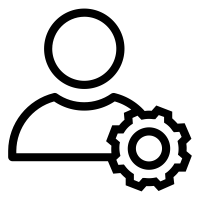
Dedicated Account Managers

5% GST Benefits for Eligible SEZ and Edu

Technical Support Available
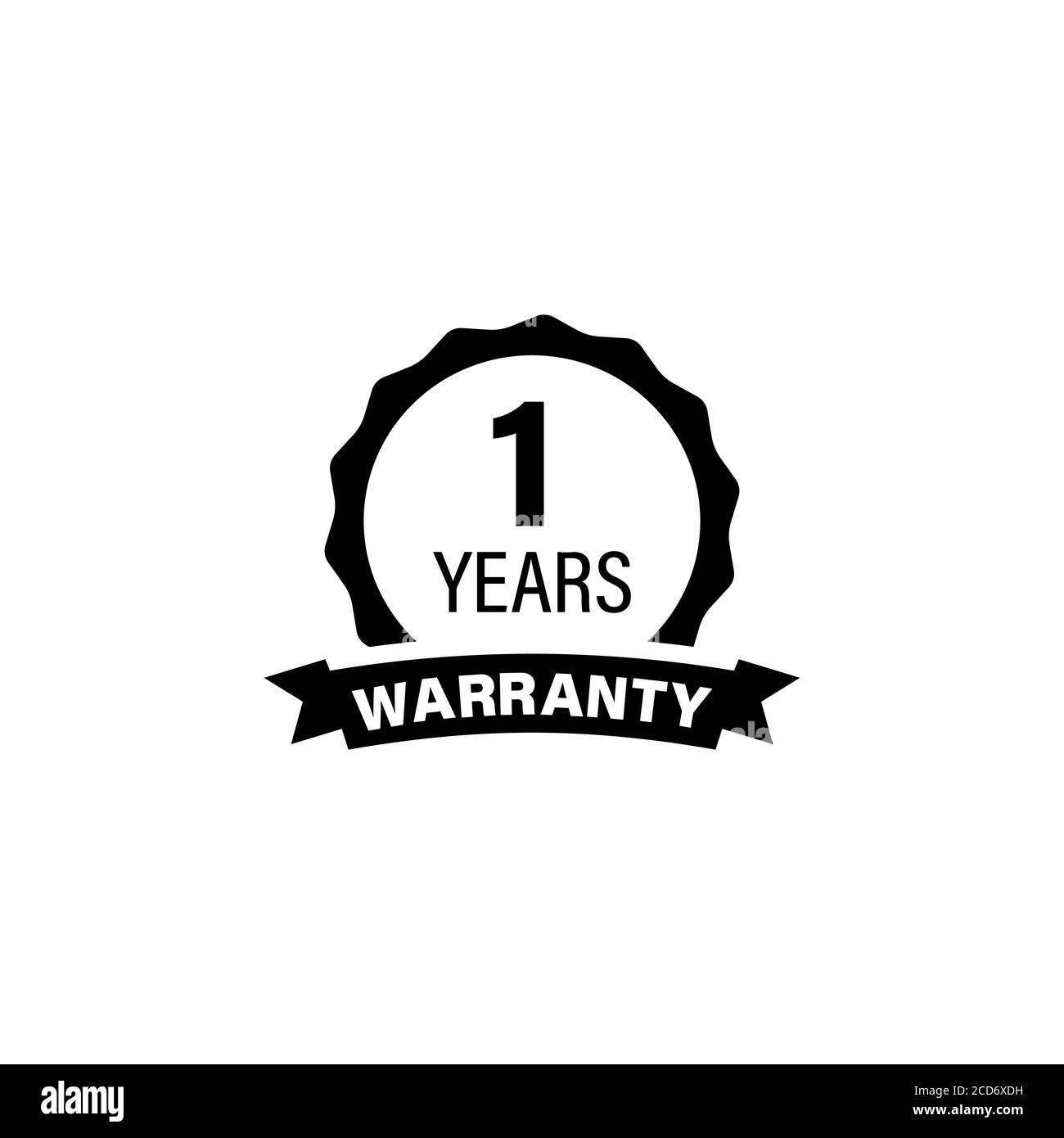
1-Year Manufacturer Warranty



